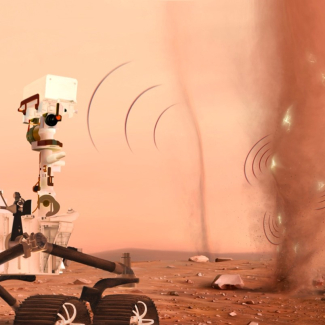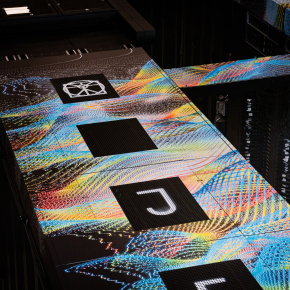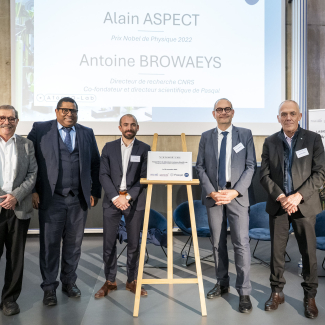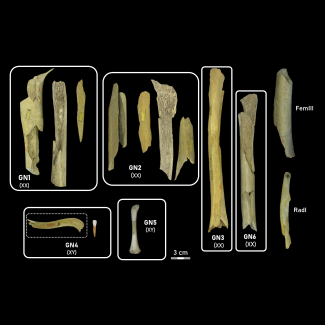
Jean Zay supercomputer : France has increased its AI dedicated resources fourfold
|
After its new extension, which increased its computing power fourfold, the Jean Zay supercomputer is now capable of 125.9 million billion operations per second. Hosted and operated by the CNRS’s Institute for Development and Resources in Intensive Scientific Computing (IDRIS), Jean Zay, which was acquired by the French Grand Équipement National de Calcul Intensif (GENCI), has become one of France’s most powerful supercomputers. The official inauguration of this extension, which was announced by the French President, was held on Tuesday, 13 May 2025.
The Jean Zay supercomputer was put into service in 2019. It replaced its predecessor Turing, whose computing power it increased tenfold. To meet the growing needs of the artificial intelligence community, it subsequently integrated successive extensions that improved its performance and functionalities. The fourth of these was announced in June 2023 by French President Emmanuel Macron during the VivaTech trade show.
Acquired by GENCI from the European manufacturer Eviden after a competitive dialogue procedure, Jean Zay 4 now has 125.9 petaflops of 64-bit computing power, corresponding to 125.9 million billion operations per second. If all of humanity counted at the rate of one operation per second, it would take 182 days to calculate what the Jean Zay supercomputer can do in one second. The supercomputer’s storage capacity also increased, reaching the order of 100 petabytes.
Thousands of research projects have already used Jean Zay for free, hence the importance of Jean Zay 4’s resources for academic research teams, start-ups, and large companies. Some projects are highly emblematic, and enjoy international renown. To illustrate this enthusiasm, three scientific projects were presented during the inauguration:
- Polymathic, the project by François Lanusse, a CNRS researcher at the Astrophysique, Instrumentation, Modélisation Laboratory (CNRS/CEA/Université Paris-Cité), applies deep learning and generative AI technologies to astronomical observations of the Universe on a large scale;
- The Owkin start-up project led by research engineer Jean-Baptiste Schiratti develops more solid and generalisable AI models for detecting pathologies, notably for untangling semantic content and texture in images from microscopes;
- The project by the start-up Pleias is led by its co-founder Pierre-Carl Langlais. It offers improved application of large language models, doing so offline and with traceability of information sources that is compatible with the new EU AI Act.
This version of the Jean Zay supercomputer with expanded capacities was produced by the French and European manufacturer Eviden (Atos Group). In addition to its converged HPC/AI1 computing power, Jean Zay is among Europe’s most eco-efficient supercomputers thanks to its graphic processors (GPU) provided by Nvidia, and next generation warm-water cooling proposed by Eviden. In addition, the installation’s residual heat is gathered to heat the equivalent of 1,500 households on the Plateau de Saclay.
Thousands of projects will be able to harness this new tool free of charge for open research in language processing, multimodal computing, biomedical research, fundamental physics, climatology, new materials and energies, autonomous vehicles, decision support, agriculture, and culture, among others. All of these fields will take advantage of the possibilities offered by the supercomputer, especially for the training, specialisation, and inference of AI foundation models.
A lever for accelerating French and European power in artificial intelligence, the Jean Zay supercomputer saw a 20-fold increase–thanks to the constant and exceptional support of its technical teams–in the annual number of AI projects selected over the last five years, rising from 72 in 2019 to more than 1,400 in 2024. It is among the machines with the most success in Europe in the field of AI.
Jean Zay will also be central to the future European project AI Factory France, which will also be celebrated soon, and brings together GENCI, the CNRS, Inria, the CEA, AMIAD, CINES, France Universités, the 9 AI Clusters, French Tech, the HubFranceIA, and Station-F. This project offers infrastructure services for computing, support, training, teaching, and expertise for the French and European AI community.
Finally, in a nod or mise en abyme, Jean Zay 4’s innovative design was completed by Obvious, an internationally recognized French collective that produces works of art using AI technology.
The inauguration took place in the presence of Antoine Petit, the Chairman & CEO of the CNRS, Philippe Lavocat, the CEO of GENCI, Bruno Bonnell, General Secretary for Investments, Jean-Luc Moullet, the Director General for Research and Innovation at the French Ministry of Higher Education and Research, and Hélène Mouchard-Zay, Jean Zay’s daughter. Antoine Petit marked the occasion, declaring:
“I am proud to inaugurate the new extension of Jean Zay, the jewel of French supercomputers. France needs this innovative and cutting edge machine with the latest advances in AI to respond to major scientific challenges. It is with determination that the CNRS has mobilised its teams since 2018 to offer computing capacities and power to the entire national community.”
Philippe Lavocat also emphasized:
“The extension of Jean Zay 4 will provide new energy to all academic and industrial researchers seeking to expand their skills in developing artificial intelligence, with a view to meeting major scientific and societal challenges, notably with the help of generative AI models. We made a dual wager: to possess a powerful and technologically advanced machine, and to invest in human resources in support of users. Success in this effort offers a major advantage in networking with European machines. Jean Zay 4 addresses national sovereignty considerations, as joining forces in AI across Europe can still make a difference thanks to the enormous potential of our experts in this field.”
- 1Computing power benefiting from the convergence of traditional computing techniques as well as IA’s.


